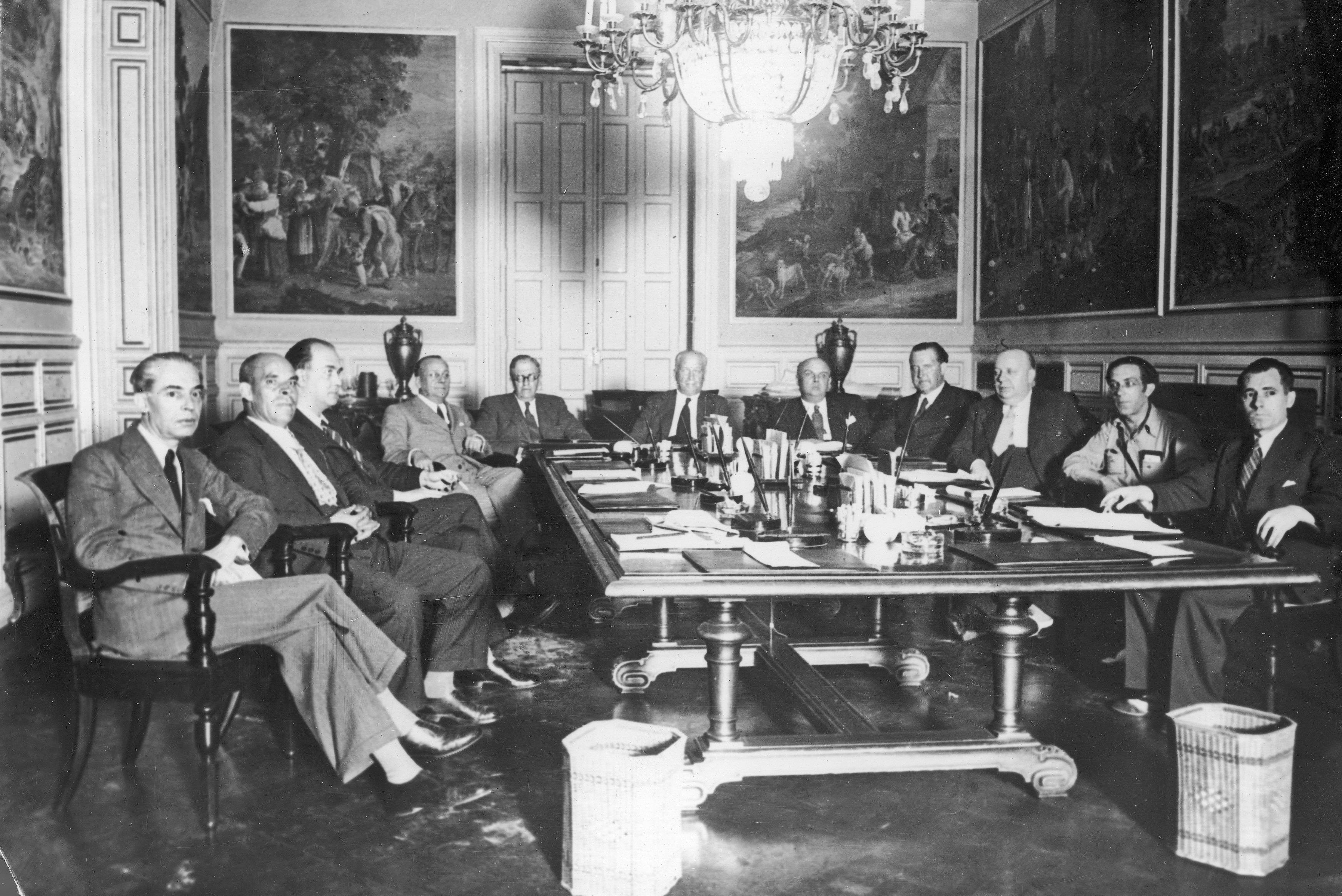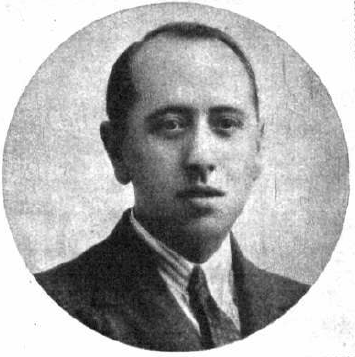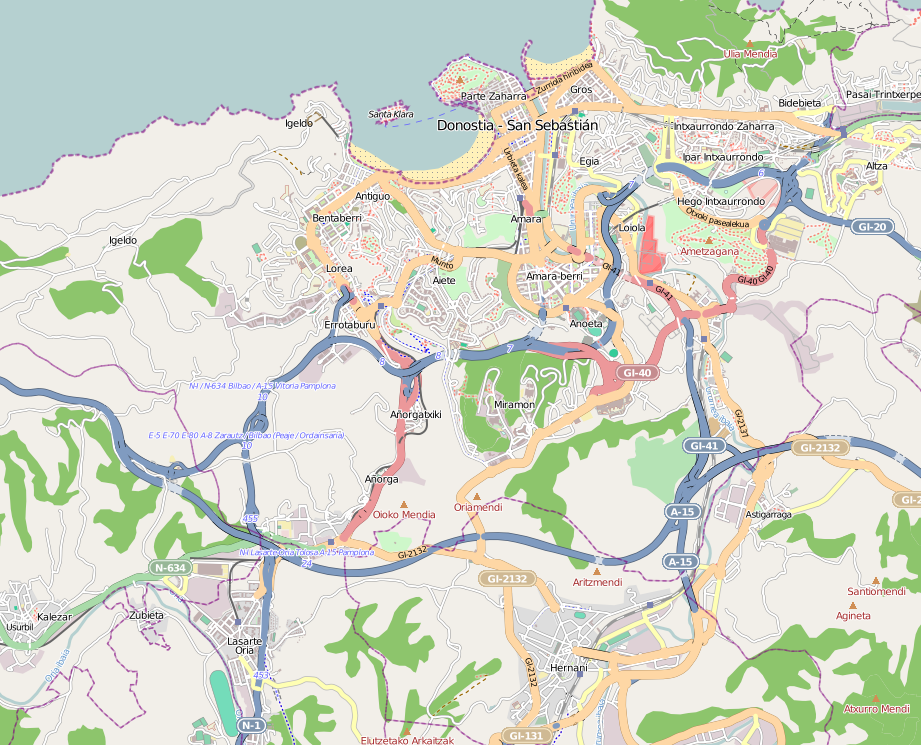|
Statute Of Autonomy Of The Basque Country Of 1936
{{Spain-stub ...
The Statute of Autonomy of the Basque Country of 1936 ( es, Estatuto de Autonomía del País Vasco de 1936; eu, 1936ko Euzkadiren Berjabetasun-Araudia) was the first statute of autonomy of the Basque Country. It was approved by the Cortes Generales of the Second Spanish Republic on 1 October 1936 in Valencia, in the midst of the Spanish Civil War. After the approval of the Statute, the first autonomous government was formed, led by José Antonio Aguirre (EAJ-PNV) and with the participation of the PSOE, PCE, EAE-ANV, Republican Left and Republican Union. Timeline References 1936 in the Basque Country (autonomous community) 1936 Events January–February * January 20 – George V of the United Kingdom and the British Dominions and Emperor of India, dies at his Sandringham Estate. The Prince of Wales succeeds to the throne of the United Kingdom as King E ... [...More Info...] [...Related Items...] OR: [Wikipedia] [Google] [Baidu] |
Statute Of Autonomy
Nominally, a Statute of Autonomy ( es, Estatuto de Autonomía, ca, Estatut d'Autonomia, gl, Estatuto de Autonomía, ast, Estatutu d'Autonomía, eu, Autonomia Estatutua) is a law hierarchically located under the constitution of a country and, usually, over any other form of legislation. This legislative corpus concedes autonomy (self-government) to a subnational unit, and the articles usually mimic the form of a constitution, establishing the organization of the autonomous government, the electoral rules, the distribution of competences between different levels of governance and other regional-specific provisions, like the protection of cultural or lingual realities. In Spain, the process of devolution after the transition to democracy (1979) created 17 autonomous communities and 2 autonomous cities, each having its own Statute of Autonomy. On 18 June 2006, Catalonia approved by referendum a new but controversial Catalan Statute of Autonomy, enhancing the Spanish territory's d ... [...More Info...] [...Related Items...] OR: [Wikipedia] [Google] [Baidu] |
Vizcaya (province)
Biscay (; eu, Bizkaia ; es, Vizcaya ) is a province of Spain and a historical territory of the Basque Country, heir of the ancient Lordship of Biscay, lying on the south shore of the eponymous bay. The capital and largest city is Bilbao. Biscay is one of the most renowned and prosperous provinces of Spain, historically a major trading hub in the Atlantic Ocean since medieval times and, later on, one of the largest industrial and financial centers of the Iberian peninsula. Since the extensive deindustrialization that took place throughout the 1970s, the economy has come to rely more on the services sector. Etymology It is accepted in linguistics (Koldo Mitxelena, etc.) that ''Bizkaia'' is a cognate of ''bizkar'' (cf. Biscarrosse in Aquitaine), with both place-name variants well attested in the whole Basque Country and out meaning 'low ridge' or 'prominence' (''Iheldo bizchaya'' attested in 1141 for the Monte Igueldo in San Sebastián). Denominations ''Bizkaia'' ''Bizk ... [...More Info...] [...Related Items...] OR: [Wikipedia] [Google] [Baidu] |
Nationalist Faction (Spanish Civil War)
The Nationalist faction ( es, Bando nacional) or Rebel faction ( es, Bando sublevado) was a major faction in the Spanish Civil War of 1936 to 1939. It was composed of a variety of right-leaning political groups that supported the Spanish Coup of July 1936 against the Second Spanish Republic and Republican faction and sought to depose Manuel Azaña, including the Falange, the CEDA, and two rival monarchist claimants: the Alfonsist Renovación Española and the Carlist Traditionalist Communion. In 1937, all the groups were merged into the FET y de las JONS. After the death of the faction's early leaders, General Francisco Franco, one of the members of the 1936 coup, would head the Nationalists throughout most of the war and emerge as the dictator of Spain until his death in 1975. The term Nationalists or Nationals () was coined by Joseph Goebbels following the visit of the clandestine Spanish delegation led by Captain Francisco Arranz requesting war material on 24 July 1936, ... [...More Info...] [...Related Items...] OR: [Wikipedia] [Google] [Baidu] |
Indalecio Prieto
Indalecio Prieto Tuero (30 April 1883 – 11 February 1962) was a Spanish politician, a minister and one of the leading figures of the Spanish Socialist Workers' Party (PSOE) in the years before and during the Second Spanish Republic. Early life Born in Oviedo in 1883, his father died when he was six years old. His mother moved him to Bilbao in 1891. From a young age, he survived by selling magazines in the street. He eventually obtained work as a stenographer at the daily newspaper ''La Voz de Vizcaya'', which led to a position as a copy editor and later a journalist at the rival daily ''El Liberal.'' He eventually became the director and owner of the newspaper. In 1899, at the age of 16, he had joined the PSOE. As a journalist in the first decade of the 20th century, Prieto became a leading figure of socialism in the Basque Country. Entering politics Spain's neutrality in World War I greatly benefited Spanish industry and commerce, but those benefits were not reflected in ... [...More Info...] [...Related Items...] OR: [Wikipedia] [Google] [Baidu] |
Popular Front (Spain)
The Popular Front ( es, Frente Popular) in Spain's Second Republic was an electoral alliance and pact signed in January 1936 by various left-wing political organizations, instigated by Manuel Azaña for the purpose of contesting that year's election. In Catalonia and today's Valencian Community the name of the coalition was Front d'Esquerres (in Catalan, meaning ''Front of the Lefts''). The ''Popular Front'' included the Spanish Socialist Workers' Party (PSOE), Communist Party of Spain (PCE), and the republicans: Republican Left (IR), (led by Azaña) and Republican Union (UR), led by Diego Martínez Barrio. This pact was supported by Galician ( PG) and Catalan nationalists ( ERC), the POUM, socialist union Workers' General Union (UGT), and the anarchist trade union, the Confederación Nacional del Trabajo (CNT). Many anarchists who would later fight alongside ''Popular Front'' forces during the Spanish Civil War did not support them in the election, urging abstention inste ... [...More Info...] [...Related Items...] OR: [Wikipedia] [Google] [Baidu] |
1936 Spanish General Election
Legislative elections were held in Spain on 16 February 1936. At stake were all 473 seats in the unicameral Cortes Generales. The winners of the 1936 elections were the Popular Front, a left-wing coalition of the Spanish Socialist Workers' Party (PSOE), Republican Left (Spain) (IR), Esquerra Republicana de Catalunya (ERC), Republican Union (UR), Communist Party of Spain (PCE), Acció Catalana (AC), and other parties. Their coalition commanded a narrow lead over the divided opposition in terms of the popular vote, but a significant lead over the main opposition party, Spanish Confederation of the Autonomous Right (CEDA), in terms of seats. The election had been prompted by a collapse of a government led by Alejandro Lerroux, and his Radical Republican Party. Manuel Azaña would replace Manuel Portela Valladares, caretaker, as prime minister. The electoral process and the accuracy of the results have been historically disputed. Some of the causes of this controversy include the fo ... [...More Info...] [...Related Items...] OR: [Wikipedia] [Google] [Baidu] |
1933 Spanish General Election
Elections to Spain's legislature, the Cortes Generales, were held on 19 November 1933 for all 473 seats in the unicameral Cortes of the Second Spanish Republic. Since the previous elections of 1931, a new constitution had been ratified, and the franchise extended to more than six million women. The governing Republican-Socialist coalition had fallen apart, with the Radical Republican Party beginning to support a newly united political right. The right formed an electoral coalition, as was favoured by the new electoral system enacted earlier in the year. The Spanish Socialist Workers' Party (''Partido Socialista Obrero Español'', or PSOE) won only 59 seats. The newly formed Catholic conservative Spanish Confederation of the Autonomous Right (''Confederación Española de Derechas Autónomas'' or CEDA) gained 115 seats and the Radicals 102. The right capitalised on disenchantment with the government among Catholics and other conservatives. CEDA campaigned on reversing the refo ... [...More Info...] [...Related Items...] OR: [Wikipedia] [Google] [Baidu] |
Vitoria-Gasteiz
es, vitoriano, vitoriana, , population_density_km2 = auto , blank_name_sec1 = Official language(s) , blank_info_sec1 = Spanish, Basque , timezone = CET , utc_offset = +1 , timezone_DST = CEST , utc_offset_DST = +2 , postal_code_type = Postal code , postal_code = 01001–01015 , area_code_type = Dialing code , area_code = , leader_title = Alcalde , leader_name = Gorka Urtaran , leader_party = Basque Nationalist Party , website = , module = , footnotes = Click on the map for a fullscreen view Vitoria-Gasteiz (; ), also alternatively spelled as Vittoria in old English-language sources, is the seat of government and the capital city of the Basque Country and of the province of Álava in northern Spain. It holds the autonomous community's House of Parliament, the headquarters ... [...More Info...] [...Related Items...] OR: [Wikipedia] [Google] [Baidu] |
San Sebastián
San Sebastian, officially known as Donostia–San Sebastián (names in both local languages: ''Donostia'' () and ''San Sebastián'' ()) is a city and Municipalities of Spain, municipality located in the Basque Country (autonomous community), Basque Autonomous Community, Spain. It lies on the coast of the Bay of Biscay, from the France–Spain border. The capital city of the province of Gipuzkoa, the municipality's population is 188,102 as of 2021, with its metropolitan area reaching 436,500 in 2010. Locals call themselves ''donostiarra'' (singular), both in Spanish and Basque language, Basque. It is also a part of Basque Eurocity Bayonne-San Sebastián. The main economic activities are almost entirely service sector, service-based, with an emphasis on commerce and tourism, as it has long been one of the most famous tourist attraction, tourist destinations in Spain. Despite the city's small size, events such as the San Sebastián International Film Festival and the San Sebastia ... [...More Info...] [...Related Items...] OR: [Wikipedia] [Google] [Baidu] |
Bilbao
) , motto = , image_map = , mapsize = 275 px , map_caption = Interactive map outlining Bilbao , pushpin_map = Spain Basque Country#Spain#Europe , pushpin_map_caption = Location within Basque Country##Location within Spain##Location within Europe , pushpin_relief = yes , subdivision_type = Country , subdivision_name = , subdivision_type1 = Autonomous community , subdivision_name1 = Basque Country , subdivision_type2 = Province , subdivision_name2 = Biscay , subdivision_type3 = Comarca , subdivision_name3 = Greater Bilbao , seat_type = , seat = , coordinates = , coordinates_footnotes = , elevation_m = 19 , elevation_min_m = 0 , elevation_max_m = 689 , area_footnotes = , area_total_km2 = 41.50 , area_urban_km2 = 18.22 , ar ... [...More Info...] [...Related Items...] OR: [Wikipedia] [Google] [Baidu] |
Carlism
Carlism ( eu, Karlismo; ca, Carlisme; ; ) is a Traditionalist and Legitimist political movement in Spain aimed at establishing an alternative branch of the Bourbon dynasty – one descended from Don Carlos, Count of Molina (1788–1855) – on the Spanish throne. The movement was founded in consequence of a dispute over the succession laws and widespread dissatisfaction with the Alfonsine line of the House of Bourbon. It was at its strongest in the 1830s but experienced a revival following Spain's defeat in the Spanish–American War in 1898, when Spain lost its last remaining significant overseas territories of the Philippines, Cuba, Guam, and Puerto Rico to the United States. Carlism was a significant force in Spanish politics from 1833 until the end of the Francoist regime in 1975. In this capacity, it was the cause of the Carlist Wars of the 19th century and an important factor in the Spanish Civil War in the 1930s. Today, Carlists are a minor party. Origins The ... [...More Info...] [...Related Items...] OR: [Wikipedia] [Google] [Baidu] |
1931 Spanish General Election
The 1931 Spanish general election for the Constituent Cortes was the first such election held in the Second Republic. It took place in several rounds. Background General Primo de Rivera, who had run a military dictatorship in Spain since 1923, resigned as head of government in January 1930.Preston (2006). p. 36. There was little support for a return to the pre-1923 system, and the monarchy had lost credibility by backing the military government. Dámaso Berenguer was ordered by the king to form a replacement government, but his dictablanda dictatorship failed to provide a viable alternative.Preston (2006). p. 37. In the municipal elections of 12 April 1931, little support was shown for pro-monarchy parties in the major cities. King Alfonso XIII fled the country and the Second Spanish Republic was formed. The Second Republic was a source of hope to the poorest in Spanish society and a threat to the richest, but had broad support from all segments of society. Niceto Alcalá-Zamor ... [...More Info...] [...Related Items...] OR: [Wikipedia] [Google] [Baidu] |

.jpg)




.jpg)